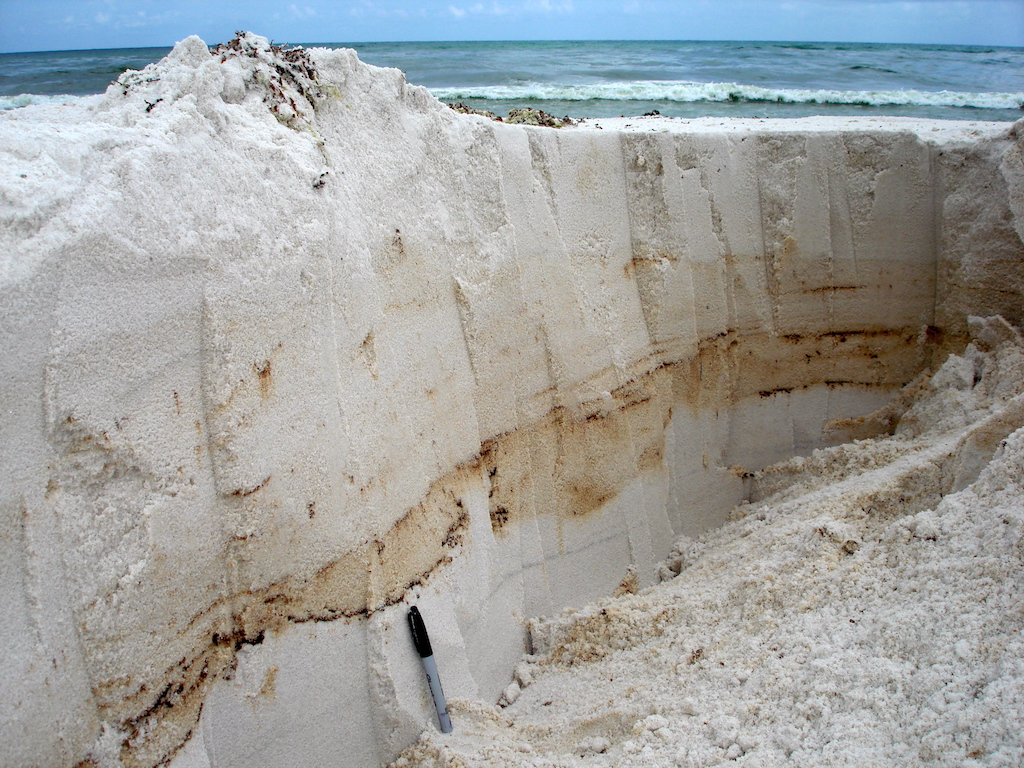Oil pollution research
Stranded oil decomposition hinges on its exposure and the dynamics of the beach environment. Exposed beaches are exceptionally dynamic sedimentary environments, where high levels of kinetic and radiation energy effectively accelerate decomposition of stranded crude oil. We investigate the mechanisms that control the degradation of crude oil washed onto sandy beaches and quantify the degradation rates of the petroleum hydrocarbons.
At the beach surface, oil degrades faster than after burial because photolysis, mechanical disintegration, oxygen availability, and increased temperature boost physical, chemical, and biological decomposition process. Notably, photooxidation facilitates decomposition of large polycyclic aromatic hydrocarbons (PAHs) that stand out through their toxicity and resistance to biodegradation.
Wave kinetic energy drives substantial sediment transport that fragments and disperses the oil, increasing the attachment area for microbes and exposure of hydrocarbons to irradiation. Such smaller oil particles rapidly become buried and integrated in the sedimentary biodegradation process. Microbial densities exceeding those of seawater by orders of magnitude, combined with aeration through tidal pumping and co-catabolism of new organic matter, support decomposition of old fossil petroleum hydrocarbons within the beach.

